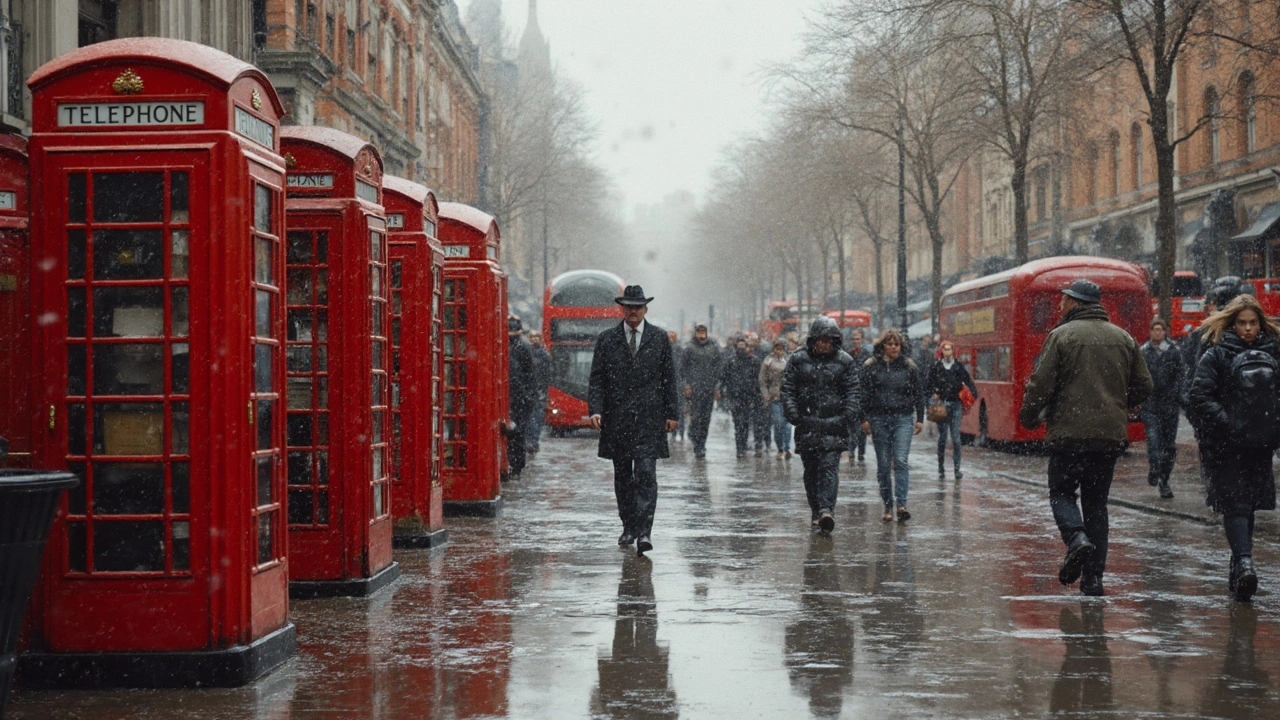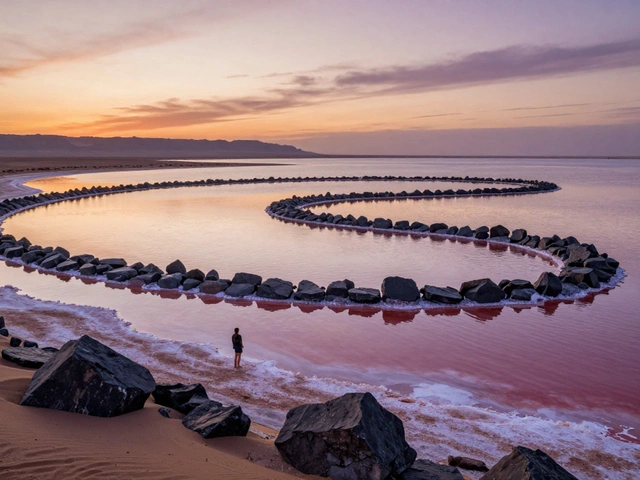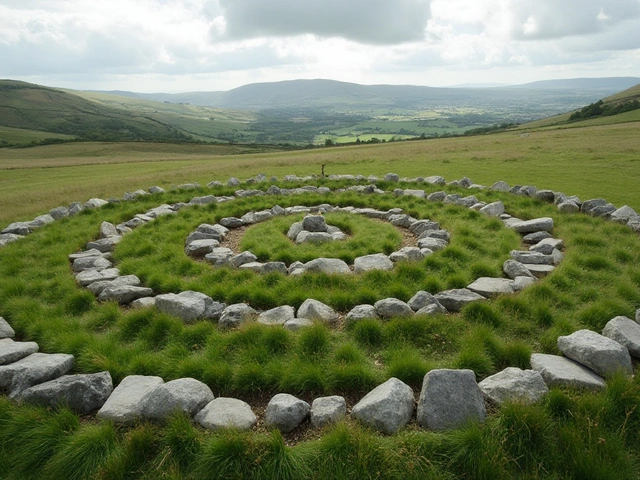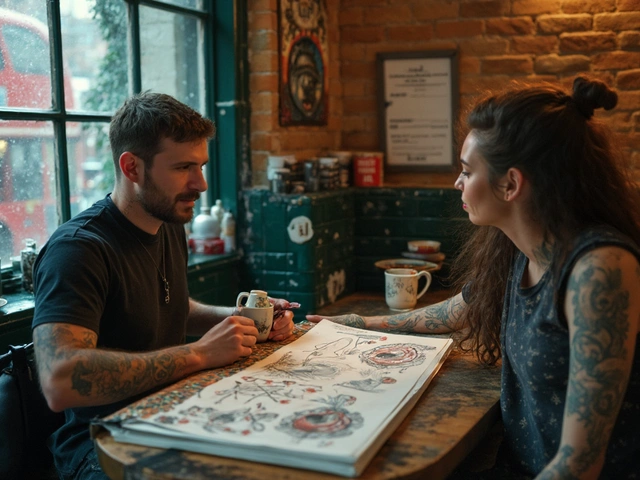Ever stared at a painting so lifelike you had to squint, double-checking that it wasn't actually a photograph? That's photorealism, a genre that turns heads and drops jaws. Strangely comforting, a little disorienting, and layered with insane skill, photorealistic art is as much about precision as it is about perception. But where did it come from? Is it just name-dropping artists copying photos with a paintbrush, or is there an untold story behind these masterpieces? Let’s untangle the canvas.
Origins and Evolution of Photorealism
Photorealism started blurring the lines between photography and painting in the United States during the late 1960s. Unlike previous art trends, photorealism leans hard on technology and obsessive detail. Richard Estes, Chuck Close, Audrey Flack, and Ralph Goings didn’t just want to paint—they wanted to outdo the camera. This was a different beast from pop art or abstract expressionism, both popular at the time. Instead, photorealist artists took the most ordinary scenes—shiny cars, diners, cityscapes—and turned them into detailed painted marvels that puzzled and impressed in equal measure.
If you dig into the initial wave, you’ll find that most photorealistic artists started from a photograph. Some literally projected photos onto canvas, carefully tracing outlines and mapping light and shadow before painting even began. Early photorealists relied on film SLR cameras (remember, no digital editing back then), so the grain and slight distortions of film subtly informed their work. When digital photography arrived, it gave a new generation of photorealists sharper references—and new problems, like hyper-sharpened lines looking unnatural when painted.
The world noticed. In 1970, Louis K. Meisel, a New York art dealer, invented the term "photorealism." He set out five rules: the artist must use a camera to gather info; they must use a mechanical or semi-mechanical means to transfer it; the finished work must look photographic; the artist should have shown that style by 1972 (Meisel was firm with his lists!); and finally, artists needed to spend at least five years in the style. Fast-forward to today—a photorealist painting can take months or even years to complete, sometimes rivaling the efforts of Renaissance masters in sheer labor. Photorealism spread to Europe by the late ’70s, growing into even stranger territory. Artists now use not just acrylics (favored for sharpness and speed, as oils dry much slower), but airbrushes, digital layering, and anything that’ll help them fool the eye.
Why did photorealism matter? The art world was wrestling with big questions: If photos can document life so perfectly, do we even need painting? Photorealists fired back by showing that the act of painting, the little mistakes and human interpretations, made their work personal and magnetic, even as it mimicked mechanical precision. Melbourne galleries today sometimes still host photorealism retrospectives, and if you pop into one, the oversized glossy surfaces practically dare you to look closer.
Want some quick facts about photorealism’s beginnings? Here’s a rundown:
| Artist | Famous Work | Year | Location |
|---|---|---|---|
| Richard Estes | Telephone Booths | 1967 | USA |
| Chuck Close | Big Self-Portrait | 1968 | USA |
| Audrey Flack | Marilyn (Vanitas) | 1977 | USA |
| Ralph Goings | Donut | 1976 | USA |
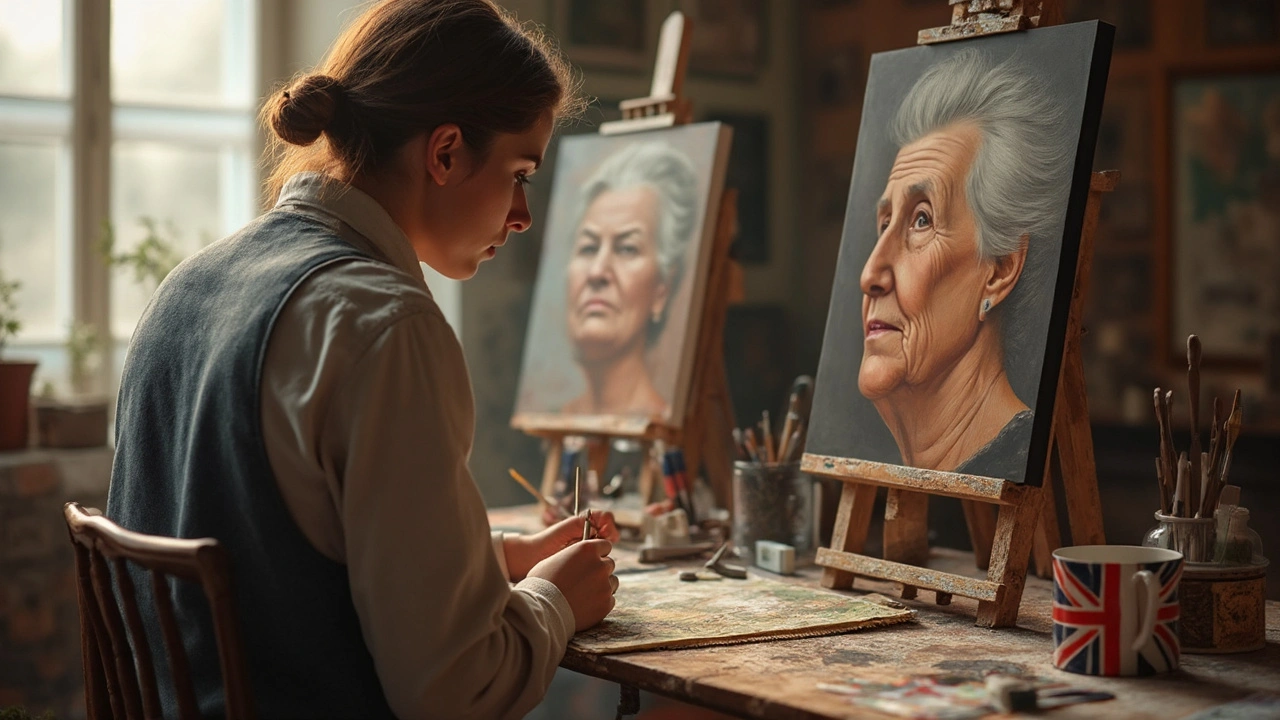
How Artists Pull Off That Jaw-Dropping Realism
Getting a photorealistic painting off the ground isn’t just ‘paint what you see’. It’s more like playing chess, planning ten moves ahead, and then sweating over every tiny square. Here’s what goes down behind those glossy surfaces: First comes the reference hunt—artists snap or choose super-sharp photos. Next, they pick their surface, usually starting with a perfectly smooth canvas or board because texture just gets in the way. Then the technical wizardry begins. Grids get drawn, outlines projected, every shape mapped. Artists sometimes spend longer prepping the reference than painting itself.
When it’s time for paint, most photorealists reach for acrylics. They dry ultra-fast, allowing for crisp, clean lines, and layering (without muddying colors) is a breeze. Oils work, too, especially for classicists who want to blend delicate skin tones. Airbrush? That’s a secret weapon for soft gradients—think gleaming car hoods or misty glasses. A casual observer might not spot the tool marks, but anyone who’s tried to feather a shadow or keep chrome reflections smooth knows how crucial airbrushing can be. Razor-sharp masking tape also saves the day for straight lines around glass or metal.
Here are some tips photorealism experts swear by:
- Work in layers—start light, then go darker. Photorealists might layer twenty (or more) glazes to build up a single cheekbone.
- Keen on detail? Invest in ultra-fine brushes (size 0 or even 000) and decent magnifiers.
- Break your reference into zones. Focus on one small area at a time.
- Take breaks. Your eyes are going to trick you—stepping away for a coffee can help you spot weirdness before it’s baked in.
- Go digital if you like, but check your colors on different screens. That ‘perfect’ blue sky on your monitor can turn neon in print.
Think it’s all science and no fun? Actually, pushing photorealism’s boundaries is where some artists get playful. Australian photorealist Robin Eley, for example, uses transparent plastic sheeting over figures to create ghostly effects, mixing technical mania with surreal vibes. Yigal Ozeri turns regular city scenes into mystical portraits, jazzing up the digital reference before painting so that you get realism with an edge. Some artists sneak in personal touches—tiny fingerprints in car paintwork, or a stray brush hair hidden in a glass reflection. These “mistakes” prove a human’s still behind the curtain.
Lighting is another obsession. Photorealists may spend hours, even days, tweaking light setups, moving objects by centimeters, chasing the perfect highlight or shadow just because a camera or eye interprets contrast differently. Realism depends on catching subtle color bounces and reflections. Painting something glassy or metallic? That means chasing a world of reflected objects—windows, trees, the artist’s own hands. One still life expert confessed she spent eighteen hours just on the label of a Coke can, because every letter distorted, reflected, and picked up a hint of her studio window. That’s dedication.
What about errors? Blunders aren’t rare—a photorealist might botch a mini-section, blend oil too wet, or copy a skewed angle from a reference and end up re-painting for hours. But this is part of the process. It takes nerves of steel and a heap of patience. Some artists find it relaxing, others say it’s torture—one Melbourne painter even likened his method to “knitting with a microscope.”
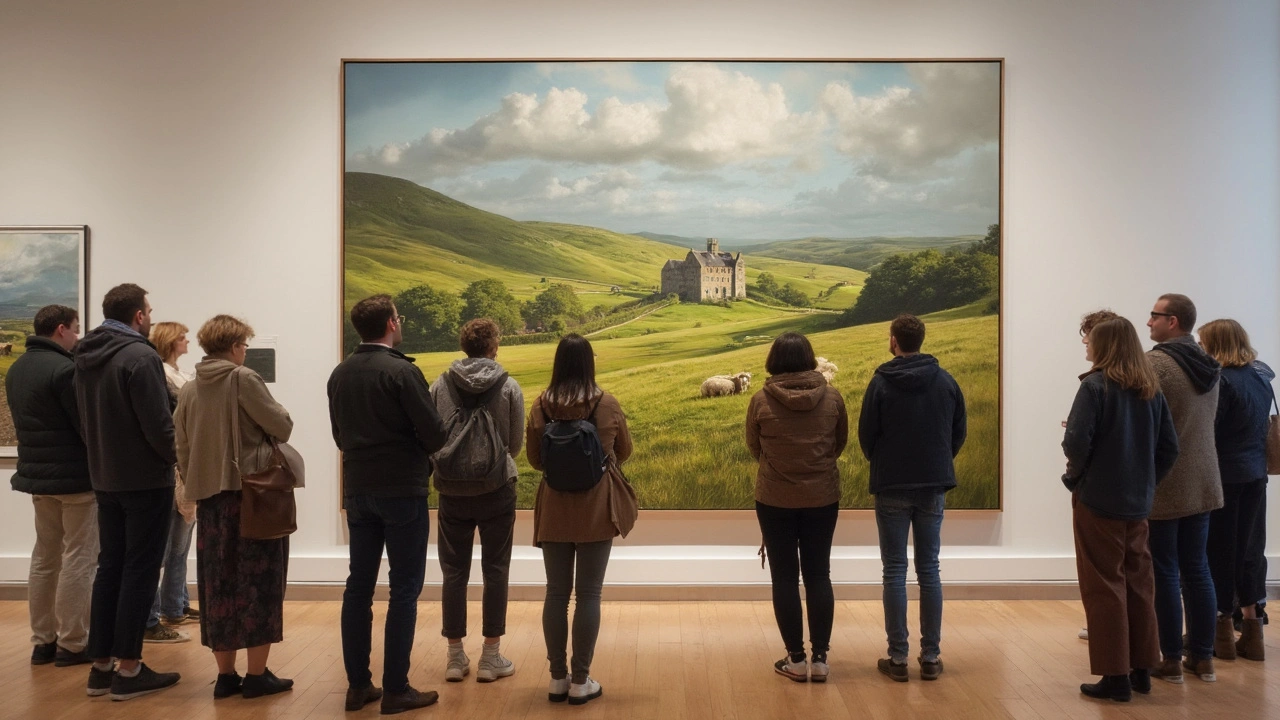
Photorealism in the Modern World: Beyond Imitation
So, why bother with photorealism when your smartphone can already spit out 4K images in a split second? One answer: viewers are starved for art that fights back against the endless photo scroll. A photorealist painting feels weirdly more intense than a photo—the colors pop differently, the focus might shift, imperfections make things sing. Hanging in city galleries from Melbourne to Berlin, some of these works sell for six or even seven figures. That’s not about tricking the eye; it’s about proving painting can still compete, and surprise.
Hyperrealism, a close cousin, pushes photorealism into almost sci-fi territory. Artists like Ron Mueck go wild with scale, making impossibly huge or tiny people who look startlingly real. Others add emotional weight or fantasy—skin sprouting flowers, rain beads frozen in midair. Where photorealists try to match the camera, hyperrealists want to go further, making viewers notice things they’ve never seen before. Some hyperrealists even exaggerate reality—bigger tears, shinier reflections, an almost cleaner-than-life look that only works in paint.
There’s also a whole online world of photorealist hobbyists. Instagram is stuffed with creators showing process videos where a blank canvas turns into an eyeball, a melting ice cream, or a tangle of rusty chains over hours and hours. #Photorealism trends regularly hit hundreds of thousands of posts, and digital tools like Procreate and Photoshop have made it possible for more people to try their hand at the style without buying a single tube of paint. But beware: almost everyone agrees, no software can replace old-school patience and a keen eye. Genuine, paint-on-canvas photorealism is still rare, and that's what gets collectors and fans excited.
If you want to dip a toe in, don’t think you need to start by painting a sparkling sports car or a self-portrait. Begin small. The magic of photorealism is, surprisingly, in the ordinary. Paint the shine on a set of keys, or the light bouncing off a glass of water. Shoot your own reference photos instead of using random pics from Google—this gives you a personal stake, and you’ll notice quirks you couldn’t invent. And remember, finishing a photorealist painting takes way longer than you think. Even a single apple, rendered in realistic style, can chew up dozens of hours.
Finally, here’s a neat table with standout photorealists still making waves and what they’re up to today:
| Name | Subject/Style | Location | Recent Notable Work |
|---|---|---|---|
| Robin Eley | Plastic-wrapped figures | Australia | Wrapped |
| Tjalf Sparnaay | Giant food | Netherlands | Grote Hamburger |
| Yigal Ozeri | Women in natural light | USA/Israel | Lizzie in the Snow |
| Raphaella Spence | Cityscapes | UK | Rome at Night |
So if someone tells you photorealism is just copying photos, there’s more to it than that. The genre’s packed with technical tricks, creative choices, and hours of sweaty work. It’s proof that, even in an age with digital everything, people still crave the spellbinding patience and wonder that only photorealism delivers. Next time you catch a painting that looks too real to be true, take a step closer; there’s a universe inside every square inch.

